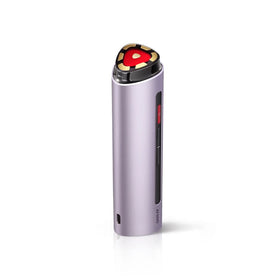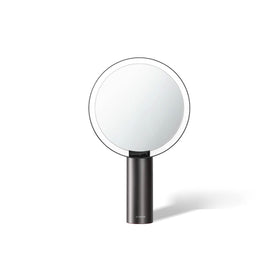Cómo quitar el cabello de la barbilla permanentemente en casa
Vista rápida
| Método | Ventajas | Contras | Características |
|---|---|---|---|
| Depilación con pinzas |
|
|
|
| Cremas depilatorias |
|
|
|
| Dispositivos de depilación IPL |
|
|
|
| Enhebrado |
|
|
|
| Pasta de azúcar |
|
|
|
| Aceites esenciales |
|
|
|
| Exfoliantes naturales |
|
|
|
Introducción
Para muchas mujeres, vello no deseado en el mentón puede ser un problema perturbador, especialmente cuando las hormonas fluctúan. Si bien los procedimientos médicos ofrecen soluciones más permanentes, los métodos naturales y caseros ofrecen opciones asequibles y suaves para... eliminar el vello del mentón en casa.
Al comprender cómo funcionan los diferentes métodos, podrá encontrar el enfoque adecuado para sus necesidades y presupuesto.

Depilación con pinzas
Depilación con pinzas Funciona extrayendo el cabello del folículo, lo que proporciona depilación temporal.
La depilación con pinzas implica agarrar los pelos con una punta inclinada. pinzas y arrancándolos de raíz. Es un método específico, pero puede irritar la piel si se usa con frecuencia. Esteriliza las pinzas, sujeta el vello lo más cerca posible de la raíz y tira en la dirección del crecimiento para minimizar el dolor.La depilación con pinzas produce una pérdida de cabello temporal, que dura entre 3 y 5 semanas.
Una técnica y herramientas adecuadas, como pinzas de punta inclinada o de precisión, son esenciales para minimizar el dolor. Sin embargo, la depilación con pinzas puede ser perjudicial si se realiza de forma incorrecta o con demasiada frecuencia.
Cremas depilatorias
Cremas depilatorias Disuelve el vello, dejando la piel suave hasta por una semana. Realice siempre una prueba localizada para determinar la sensibilidad y el tiempo de espera. Debe usarse con precaución para evitar irritaciones.
Algunas recetas de cremas naturales incluyen cúrcuma, avena, jugo de limón y aceites naturales. Tenga cuidado de no dejar la crema actuar demasiado tiempo, ya que puede causar irritación. Para obtener mejores resultados, vuelva a aplicarla según las instrucciones del producto.
Dispositivos de depilación IPL
IPL, o intenso terapia de luz pulsada, utiliza luz de amplio espectro para dañar los folículos pilosos y reducir el crecimiento de vello no deseado.
Dispositivos de depilación IPL Diseñado para uso doméstico Pulsos directos de energía luminosa al tallo del cabello, que luego transfieren calor hacia abajo para dañar el folículo.
Con tratamientos repetidos a lo largo del tiempo, la IPL puede debilitar significativamente y prevenir el recrecimiento del vello del mentón durante meses.
Depilación IPL del mentón Ventajas
- Tratamiento cómodo en casa, sin tiempo de recuperación.
- Permite una pérdida gradual del cabello a lo largo de varias sesiones para lograr una apariencia natural.
- Puede tratar una amplia superficie de manera efectiva.
- Poco o ningún dolor al usarlo según las indicaciones. Las cremas anestésicas pueden aumentar el alivio.
- Consigue una caída del cabello estable y duradera en el tiempo.
Desventajas de la depilación de mentón con luz pulsada intensa (IPL)
- Generalmente se requieren de 6 a 8 tratamientos para obtener mejores resultados. No produce pérdida de cabello permanente inmediata.
- El costo inicial de un dispositivo IPL es más alto, aunque a largo plazo es menos costoso que los procedimientos profesionales.
- Puede provocar efectos secundarios iniciales como enrojecimiento leve, irritación o cambios de pigmentación si no se usa adecuadamente para su tipo de piel y con la intensidad correcta.
- Requiere tratamientos de mantenimiento periódicos cada 4 a 6 meses para evitar el recrecimiento del cabello.
- No funciona para todos. Los resultados dependen de factores como el color del cabello, el tono de piel, los cambios hormonales y la constancia en el uso.
- Solo se puede tratar el cabello en fase de crecimiento activo. Los folículos inactivos requieren tratamientos adicionales una vez activados para dañarlos.
Usar un dispositivo IPL diseñado específicamente para la depilación facial y seguir las instrucciones al pie de la letra puede ayudar a minimizar los riesgos y los efectos secundarios. Asegúrese de afeitarse la barbilla antes del primer tratamiento, comience con una intensidad más baja y aumente la intensidad gradualmente según la tolerancia para obtener mejores resultados. Consulte nuestro blog si tiene alguna pregunta. IPL vs láser.
Con el uso regular, la IPL puede proporcionar una piel mucho más suave y sin vello en la zona del mentón. Para una caída del cabello más permanente, pueden requerirse tratamientos médicos profesionales. Sin embargo, la IPL sigue siendo un excelente método para la reducción y el tratamiento del vello a largo plazo en casa para muchas personas. Descubre más en nuestro blog: El mejor dispositivo para eliminar el vello en 2023.
Enhebrado
Enhebrado Utiliza hilo retorcido para arrancar el vello de raíz, lo que proporciona un resultado apurado con mínimo contacto con la piel. Es muy preciso y puede atrapar incluso el vello más fino. El enhebrado dura aproximadamente lo mismo que la depilación con pinzas, pero requiere práctica para dominarlo. Consulta primero con un enhebrador profesional para aprender la técnica correcta antes de intentarlo en casa.
Pasta de azúcar
Pasta de azúcar Se adhiere al cabello, no a la piel, y está hecho de ingredientes naturales como azúcar, agua y jugo de limón.
La pasta de depilación casera se puede aplicar y retirar correctamente como una alternativa suave a la depilación con cera.Los resultados pueden durar de 3 a 6 semanas, ya que el vello se elimina desde la raíz.
Aceites esenciales
Aceites esenciales como lavanda, romero y menta ayudan a que los folículos pilosos permanezcan inactivos al aplicarse sobre la piel. Diluye unas gotas de aceite en aceite de jojoba o de almendras y masajea suavemente la zona de la barbilla.
Para obtener mejores resultados, aplíquelo después de la depilación y a diario para evitar el crecimiento de vello. Los aceites requieren un uso continuo para mantener su eficacia, pero ofrecen una solución natural para el control y la prevención.
Exfoliantes naturales
La exfoliación elimina las células muertas y destapa los folículos pilosos, permitiendo una eliminación más limpia. Use ingredientes naturales como azúcar, avena, posos de café o cáscaras de cítricos de 2 a 3 veces por semana para exfoliar suavemente el mentón.
Tenga cuidado de no exfoliar demasiado, especialmente después de otras métodos de depilación Lo cual puede causar irritación. La exfoliación mejora la penetración de aceites y lociones, así como la eficacia de la depilación.
Efectos secundarios iniciales
Algunos posibles efectos secundarios pueden ocurrir con métodos de depilación como el uso de hilo, pinzas, cera o cremas depilatorias. Los efectos secundarios iniciales más comunes incluyen:
- Enrojecimiento La depilación que arranca el vello de raíz o que implica fricción contra la piel puede causar enrojecimiento temporal, conocido como eritema postinflamatorio. Se debe a una inflamación leve en los folículos pilosos y la piel circundante. El enrojecimiento suele desaparecer en cuestión de horas o días. Aplicar gel de aloe, crema de hidrocortisona o una compresa fría puede ayudar a reducir el enrojecimiento.
- Irritación Los productos depilatorios, la cera o ciertos aceites esenciales contienen químicos agresivos que pueden irritar la piel sensible, causando picazón, ardor o escozor. Realice siempre una prueba cutánea según las indicaciones para comprobar si presenta irritación antes de usar. Evite cualquier producto que irrite la piel. Una irritación leve suele desaparecer rápidamente una vez retirado el producto. Consulte a un dermatólogo si la irritación es grave o persistente.
- Pelos encarnados Los métodos de depilación como el afeitado, la depilación con pinzas o la cera pueden provocar vellos encarnados en algunas personas, especialmente en aquellas con vello grueso o rizado. Los vellos encarnados se forman cuando el vello afeitado o depilado se enrosca sobre sí mismo bajo la piel. Aplicar exfoliantes, cremas hidratantes y compresas tibias puede ayudar a prevenir y eliminar los vellos encarnados. Consulte a un dermatólogo si tiene vellos encarnados graves o infectados.
- Golpes Pueden formarse pápulas o pústulas al depilarse de raíz, especialmente en zonas sensibles como la cara o la línea del bikini. Las protuberancias suelen ser inflamaciones leves y temporales que desaparecen por sí solas en unos días. Las compresas tibias, el gel de aloe, la crema con hidrocortisona y la exfoliación de la zona pueden acelerar la cicatrización. Consulte a un médico si las protuberancias están dolorosas, inflamadas o infectadas.
- Cambios de pigmentación Puede presentarse oscurecimiento o aclaramiento temporal de la piel, especialmente en zonas como el labio superior. Los problemas de pigmentación tienden a desaparecer gradualmente en cuestión de semanas o meses. Use protector solar de amplio espectro, exfolie y aplique cremas iluminadoras para acelerar la desaparición de la pigmentación y protegerse de la radiación UV, que puede agravar los problemas de pigmentación. Consulte a un dermatólogo si presenta cambios de pigmentación graves o permanentes.
- moretones La depilación con pinzas, hilo o cera enérgica en la misma zona puede provocar daños leves en los tejidos blandos y hematomas. Estos suelen desaparecer en una o dos semanas. El gel de árnica o las tabletas/cápsulas de bromelina pueden acelerar la cicatrización y la desaparición de los hematomas. Consulte a un médico si presenta hematomas inexplicables o graves. Repetir el tratamiento demasiado pronto podría provocar más hematomas, así que espere a que la zona haya cicatrizado antes de volver a intentarlo.
- Infección - Si no se realiza de forma adecuada utilizando herramientas y técnicas esterilizadas, la depilación con pinzas, con hilo o con cera conlleva un riesgo de infección.Consulte a un médico si presenta signos de infección, como hinchazón, calor, dolor intenso, pus, enrojecimiento que se extiende o vetas rojas que podrían requerir antibióticos. Lávese siempre bien las manos, las herramientas y la zona a tratar para evitar infecciones.
En la mayoría de los casos, estos efectos secundarios son temporales y leves. Sin embargo, si alguna reacción parece grave o persiste más de unos días, consulte a su médico. Lo mejor es que un profesional médico realice la depilación con hilo, cera u otro método de depilación en zonas faciales sensibles la primera vez.
Asegúrese de seguir cuidadosamente todas las instrucciones del producto y las instrucciones de cuidados posteriores para minimizar la irritación y los efectos secundarios.

Preguntas frecuentes sobre la depilación del mentón
¿Cómo puedo detener o eliminar el crecimiento excesivo de vello en el mentón?
Para reducir el crecimiento excesivo de vello en el mentón, tienes varias opciones:
- Pinzas El vello se depila con pinzas de punta inclinada. La depilación con pinzas extrae el vello del folículo y puede causar una caída temporal del cabello de 3 a 5 semanas. Tenga mucho cuidado para evitar irritación y daños.
- Usar cremas depilatorias Como cúrcuma, avena o jugo de limón, para disolver el vello hasta por una semana. Siempre haga una prueba en una zona específica y siga las instrucciones.
- Intentar terapia de luz pulsada intensa (IPL) Usando un dispositivo doméstico. La luz pulsada intensa (IPL) dirige la energía lumínica para dañar el folículo piloso y puede proporcionar una reducción del vello duradera en 6-8 sesiones.
- Aplicar aceites esenciales Como aceite de lavanda, romero o menta, para evitar el crecimiento de vello nuevo. Diluya unas gotas en un aceite portador como el de jojoba y masajee suavemente la barbilla.
- Exfolia la zona 2 o 3 veces por semana para eliminar la piel muerta y destapar los folículos pilosos. Usa ingredientes como azúcar, café molido o cáscaras de cítricos. Hazlo con suavidad para evitar la irritación.
- Si el crecimiento excesivo de vello se debe a un desequilibrio hormonal u otra afección, consulte a un dermatólogo para que le recete medicamentos. Podrían necesitarse medicamentos o procedimientos médicos para una reducción permanente.
¿Cuáles son los pros y contras de depilarse el mentón?
Depilarse el mentón, también conocido como pinza, tiene algunas ventajas y desventajas:
Ventajas:
- Es un método específico para que puedas depilarte específicamente en la zona que desees.
- Proporciona una pérdida de cabello temporal durante 3 a 5 semanas, ya que elimina el cabello del folículo.
- Es un método muy asequible que utiliza únicamente unas pinzas.
Contras:
- Puede irritar la piel, especialmente si se hace con frecuencia o repetidamente en la misma zona.
- Depilarse uno por uno lleva mucho tiempo.
- Una técnica incorrecta puede provocar rotura y daño del cabello. Debes sujetar el cabello cerca de la raíz.
- El cabello volverá a crecer y requiere mantenimiento. Depilarse no causa pérdida permanente del cabello.
- Para algunas personas, depilarse el mentón resulta doloroso, aunque menos doloroso que depilarse con cera.
- No, depilarse la barbilla no hará que el vello sea más grueso ni más áspero. Es un mito. El vello que vuelve a crecer será del mismo tipo que tenías antes.
En resumen, depilarse el mentón es una solución temporal que debe repetirse. Si bien no elimina el vello de forma permanente ni altera su crecimiento, puede reducir eficazmente el exceso con un mantenimiento regular. Debe hacerse con mucho cuidado para evitar irritaciones y daños. Para una reducción más duradera, pueden requerirse otros métodos como la terapia IPL o procedimientos médicos.
Conclusión
En resumen, los métodos naturales alternativos, como la depilación con pinzas, las cremas depilatorias, el hilo, la pasta de azúcar, los aceites esenciales, los exfoliantes naturales y los dispositivos IPL, brindan opciones más suaves para la eliminación del vello del mentón en casa.
Encontrar la combinación adecuada de métodos temporales y de larga duración depende de tus necesidades, estilo de vida y presupuesto. Consulta con un dermatólogo si el vello no deseado te causa molestias o podría indicar una afección subyacente.
Con paciencia y un autocuidado centrado en tu bienestar, puedes lograr una piel suave y cómoda usando ingredientes naturales y seguros, y herramientas sencillas. Acepta tu propia piel y consulta con un dermatólogo si tienes problemas graves de crecimiento del cabello.
Leer más
- Depilación de piernas: 7 métodos comparados y ¿cuál es el mejor para ti?
- Milagro anti-envejecimiento: ¡El mejor dispositivo de radiofrecuencia para el rejuvenecimiento ocular en 2023!
- Tratamiento de las arrugas de la frente: ¿Cómo puede tu dieta suavizarlas?
- Depilación púbica: ¿cómo minimizar el dolor y las molestias?
- Tratamiento antienvejecimiento: ¡encuentre los mejores tipos de afecciones de la piel que provocan el envejecimiento!





